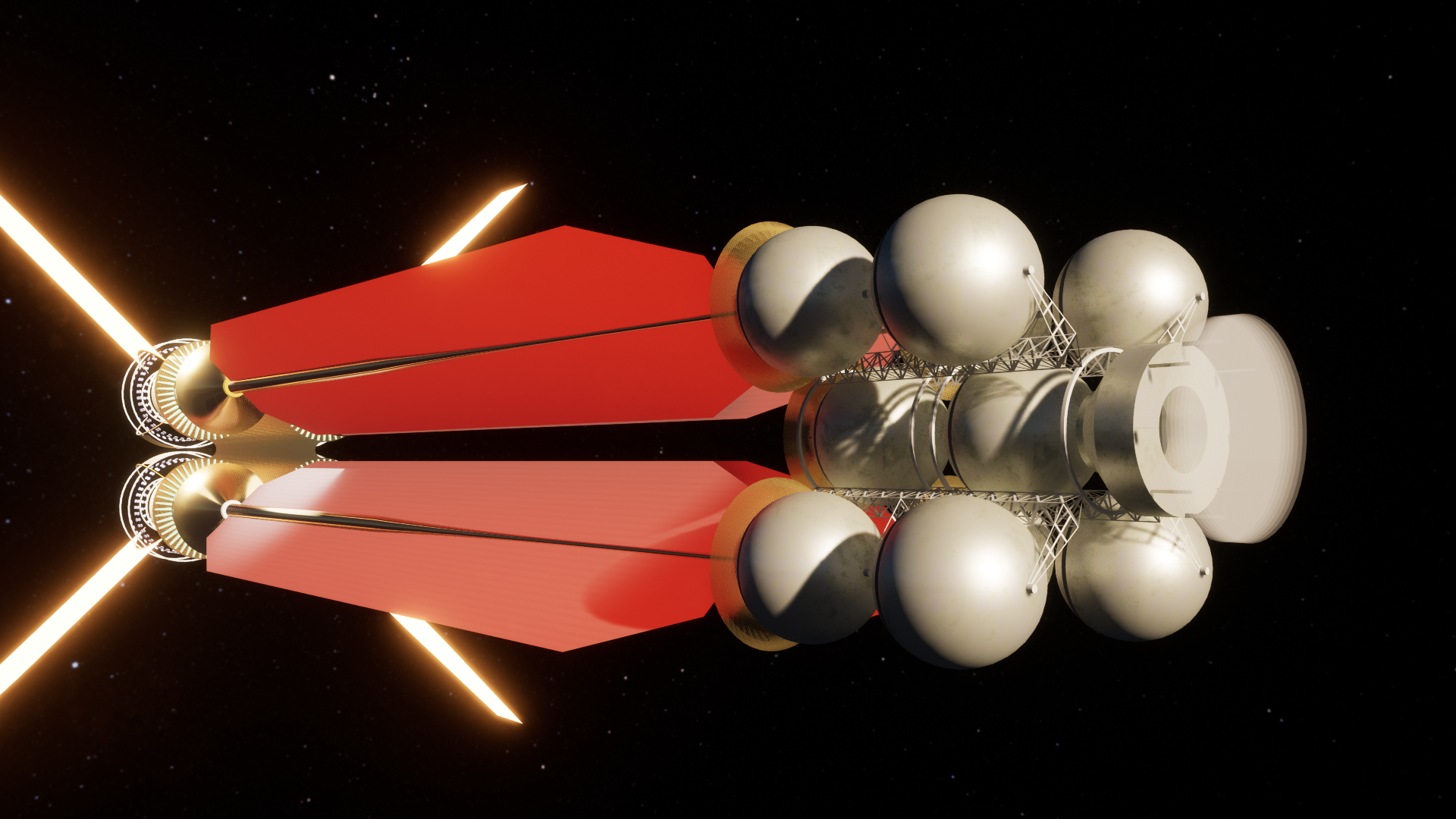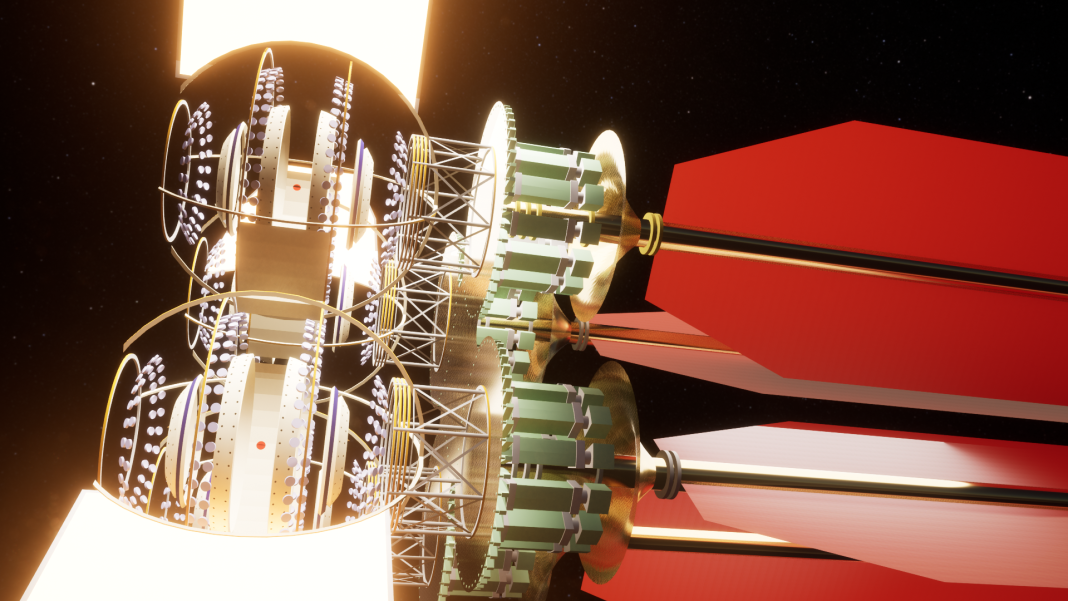Dr Kelvin F Long, Aerospace Engineer and Astrophysicist, leads the Interstellar Research Centre, a division of Stellar Engines Ltd. He argues that fusion propulsion will enable the full exploration of the solar system and beyond
Beginning from the last century with the first orbital satellites placed into space, humanity explored all of the planets of our solar system using robotic probes. This includes the launch of the Voyager 1 and 2 probes in 1977 which are now far outside of the solar system and headed out into interstellar space. It is feasible that in the future we may construct probes that can go much faster and further.
The maturation of advanced propulsion technology is also required for human crewed missions beyond the Moon, such as to the red planet Mars. One of the main hazards for astronauts in space is overexposure to space radiation in the event of a solar flare, as well as loss of bone density in a microgravity environment. Yet this cannot be achieved with existing technology and requires a new propulsion paradigm with a high-energy capability. This is possible with fusion reactions, the same physics mechanism that powers the Sun.
Laboratory fusion
Any fusion facility must demonstrate thermonuclear ignition of hydrogen and helium nuclides. This is typically set by the Lawson criteria which demands that the product of the number density, confinement time, and plasma temperature exceeds some minimum value.
n France, work is underway on the construction of the International Thermonuclear Experimental Reactor (ITER), which is based on magnetic tokamak technology. Its goal is to produce a net energy gain of 10 as measured by the ratio of 500 MW energy output to 50 MW energy absorbed for 100s of seconds, but it is generated from a 300 MW electrical supply.
The Joint European Torus (JET) has operated at the Culham Centre for Fusion Energy in Oxfordshire, England, since 1983. In 1991, it performed the first-ever experiments with deuterium-tritium fuels in a laboratory and then, in 1997, broke records by achieving a gain of around 0.67, with an input power of 24 MW producing an output of 16.1 MW (21.7 MJ). After upgrade work to align JET technologically with ITER, in 2021, it went on to produce 12 MW (59 MJ) in a 5 s pulse. Yet it takes a total power requirement of 500 MW to run JET.
JET was closed down in 2023 and is moving towards full decommission by 2040, although not before breaking its record and achieving 69 MJ in 2024 with 0.2 milligrams of DT fuel. Culham does still operate the Mega Ampere Spherical Tokamak (MAST) experiment. This is also supported by other facilities like the Central Laser Facility (CLF) at the Rutherford Appleton Laboratory near Oxford, which conducts innovative fusion-related experiments on its Vulcan laser, which is the highest-intensity focussed laser in the world at 1021 W/cm2.
The prospects for fusion on Earth significantly increased in 2022 when the U.S. National Ignition Facility (NIF) achieved thermonuclear ignition in a laboratory in what some have described as a “Kitty Hawk” moment for fusion energy. This was using 192 Nd: glass laser beams frequency tripled from infrared light to ultraviolet so as to reduce laser-plasma instabilities, and compress a DT target using inertial confinement fusion (ICF) for a fraction of a second, producing a net energy gain of 1.5, using an input energy of 2.05 MJ and an output energy of 3.08 MJ and the actual wall plug energy was 300 MW. In 2024, they went even further and achieved a gain of 2.4, demonstrating further progress with 5.2 MJ laser energy delivered to the target. We are inching our way towards controlled fusion, although optical lasers have a very low efficiency at <1%.
First Light Fusion was established in the UK in 2011 and is pursuing an innovative type of ICF. The method involves the electromagnetic acceleration of a metal projectile at 10s km/s into a fusion target embedded within a cube, where spherical cavities help to focus the shock waves of the incoming projectile energy to implode the capsule to 100s km/s for fusion ignition. The idea takes its inspiration from a pistol shrimp claw. It has recently conducted experiments on the Sandia National Laboratory Z-machine to demonstrate a record 1.85 TPa pressure for an 80 TW shot.
Established in 2009, UK-based Tokamak Energy operates the ST40 high-field compact spherical tokamak. Although its main interest is electricity for a national grid, by the 2030s, it is considering alternative applications for its High-Temperature Superconductor (HTS) technology, including space.

Fusion propulsion
Once fusion on Earth has been successfully achieved and is regularly supplying energy to a national grid, the application to space technology will be the next obvious step. One option is to use Diode Pumped Solid State Lasers (DPSSL) which are based on semiconductor technology and may have a driver efficiency of 6-12% and may even approach 20% in the future. These were also proposed for use in Mars missions such as the Vista concept design also developed by NIF scientists.
Also in the U.S., RocketStar, founded in 2014, has invented a FireStar fusion drive, a fusion-enhanced space thruster. This is achieved by injecting boron into the thruster exhaust, which then collides with high-speed protons produced from a H2O-fueled pulsed plasma. They claim that once the boron decays, 11B →3α, this results in a 50% thrust augmentation.
The Direct Fusion Drive (DFD) is a concept that has been under development by the Princeton Plasma Physics Laboratory since around 2001.
It uses a magnetic confinement torus heating method inside of a linear solenoidal coil and a radio frequency antenna to heat a D3He fuel to plasma conditions and fusion ignition. They plan to use it to carry a 1 tonne payload to Pluto in a trip time of four years or, Saturn’s Moon Titan in around 2.6 and six months, or a crewed mission to Mars in around four months.
Helicity Space is a company founded in 2018 with the goal to catalyse humanity’s spacefaring ambitions for fast, sustainable and safe applications. Their Helicity Drive design utilises magneto-inertial fusion method to confine, heat and compress the plasma. Applications include a round-trip journey to Mars in under four months carrying a 450 tonnes payload.
Pulsar Fusion was founded in 2011 and is developing a compact Direct Fusion Drive (DFD) engine to be operational by 2027 and may achieve a velocity of 223 km/s for use in missions to Mars using D3He fuel. The DFD aims to carry a 1 tonnes payload to Pluto in a trip time of four years with an orbital test by 2027.
This author has been examining the possibility of a 1,000 AU mission, called SunVoyager, to facilitate an astronomical telescope at the outer reaches of our Solar System driven by an ICF engine. An even more ambitious design by this author is for an interstellar mission in a robotic spacecraft concept called Pegasus; the vehicle is illustrated in Figures 1 and 2. It would carry a 150 tonnes payload to 4.3 light years in a trip time of order 100 years.
For any companies pursuing fusion research, they have to demonstrate experimental credibility if they are to avoid being accused of practising “voodoo fusion” as some have claimed without showing verifiable results which prove fusion reactions have occurred, but also that they can exceed the Lawson criteria to give a positive energy gain. This will be an important criterion for any would-be investors. Indeed, in June 2024, a fusion energy start-up, Xcimer Energy, announced they had raised $100 million to build a prototype laser-driven inertial fusion facility based on the results of NIF. These are exciting times.
Economic vision for the UK
In 2023, the UK Government published a policy paper titled Towards Fusion Energy 2023, which built on from the earlier 2021 fusion energy strategy. The report noted the importance of the UK looking to the future to maintain its position and set a goal to prove the commercial viability of fusion by constructing a prototype fusion power plant that delivers net energy.
In addition, it is to build a world-leading fusion industry that supports different technologies which can be exported in subsequent decades and, therefore, contribute to the UK economy. An overall focus seems to be on the maturation of a fusion-based industry by the 2030s through a combination of private and public sector partnerships.
The UK Government has also stated that it wants to create a world-class space nation from its existing base of around 45,000 people. This includes supporting UK business, research, and innovation to enable us to collaborate with international partners in space activities and then seek out new competitive opportunities that contribute to economic growth and strengthen our national defence. In real terms, this means an ambition to move from the current 5% share of the global space sector with £17.5 billion domestic revenue to a nation that has a 10% share by around 2030.
A sure way to achieve that is to build on the UK’s already highly skilled aerospace and nuclear industry and put significant resources into the development of commercial power reactors for Earth and future colonies on the Moon and Mars. Yet after that comes the application of advanced space propulsion. The nation that becomes an early adopter of this technology will surely garner a significant advantage in the development of any off-world economic development.
Such a reality will only come to fruition when policymakers can see into a future beyond their own lifetime, one where our nation is serving a vital purpose in the exploration of space.
To ensure long-term growth, we must adopt a strategic vision that surpasses existing problems and paradigms if we are to receive the benefits of new and innovative technological developments as they mature into the market. Investing in fusion today, including fusion propulsion, is one way to help facilitate such a vision.
K. F. Long, “Development of SunVoyager Interstellar Precursor Probe Driven by Inertial Confinement Fusion Propulsion”, Journal of Spacecraft & Rockets, 28 May 2024.

This work is licensed under Creative Commons Attribution-NonCommercial-NoDerivatives 4.0 International.


